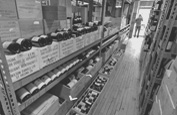Crossroads of Three Spains: Garnacha Finds Its Voice amid Gredos’ Ancient Granite Terraces as Vanguard Winemakers Lead a Revival
To understand Spanish wine in 2025, you have to keep up with it. Changes—good and less so—are inevitable, and the pace is increasing. Climate change is adding pressure to areas already rain-starved and some older wineries have simply allowed their once productive vineyards to all into disrepair.
This week, we turn our focus on one such region, Sierra de Gredos—still without its own appellation but a major personality all the same. Likewise, the winemakers. Having been largely ignored for decades, a new generation has been scouring the hillsides to find currently unused sources for the raw and rustic wines of the past century—Garnacha vines, most over fifty years old. In their dotage, these vines produce small, highly concentrated fruit.

The heavy-duty style of wine once the standard here has slipped out of fashion. Daniel Gómez Jiménez-Landi and Fernando García—Gredos natives and our featured producers—saw a niche that fit their philosophies of winemaking in general and Garnacha in particular. They are crafting Burgundian-style Garnachas—lighter, lower in alcohol and with considerably more finesse than most experts thought possible with the workhouse varietal. Their success can be gauged through the almost universal praise their bottlings have received, but it is best to discover this for yourself. For wines of this quality, prices remain extremely tame and will encourage a re-evaluation of Garnacha. Long the base of peasant wine, Dani and Fernando have released its innate nobility.
Gredos Reborn: Garnacha Bridges Three Spains
Gredos is a triumvirate—a triune kingdom spanning three glacial valleys (Alto Alberche, Alberche and Tiétar), three provinces (Ávila, Madrid, Toledo), three autonomous regions (Castilla-y-León, Madrid and Castilla-La Mancha) and three distinct appellations (Cebreros, Vinos de Madrid and Méntrida, along with the generic Vino de la Tierra). The mountains of Gredos soils, tradition and old bush vines, many neglected and awaiting re-discovery. The one thing it does not have? It is its own D.O.
This is hardly the result of laziness on the part of the Spanish, but the confounding paperwork of bureaucracy, which may be worse. Although conflicting interests have held back any movement in favor of an individual Gredos D.O., even labels that tout their legally-mandated appellations—Cebreros, Madrid or Méntrida—manage to worm ‘Gredos’ somewhere onto the bottle. And that is because these wines, pure, transparent and tense Garnachas and fresh, saline Albillo Reals, are among the most distinctive wines in Spain.

Preserving the Past, Cultivating the Future
Gredos enjoyed a brief revival in the 1970s, but the bulk of the past century threw slings and arrows at the region at every turn: Phylloxera arrived late, and then came civil war. When the railway from Valdepeñas to Madrid was built, it allowed an influx of wine into the capital, and Gredos found that its hard-to-work, often terraced vineyards could not compete.
For the bulk of the 20th century, Gredos descended into a vicious circle of low prices and diminishing demand.
If Gredos is currently sliding back under the microscope of wine lovers, it is because of the valiant efforts of new pioneers like Daniel Gómez Jiménez-Landi and Fernando García, who have set out to defined a new style of Garnacha—one that is light in color but intensely flavored, elegant and mineral-driven. The term ‘Burgundy-like’ is bandied about—a rare descriptor for Garnacha. The truth is, Burgundian or not, the red wines of Gredos have immediate appeal to those who grow weary with the heavy Grenaches of southwest France, especially as a summer refresher. Due to the elevations in Gredos (where even the lowest vines sit at over a thousand feet and the highest may top 4000) the wines are as crystalline and pristine as many top Pinot Noirs.

Viticultores Comando G
Granite. Guts. Garnacha.
If ‘Comando G’ sounds a little ‘thug’, it is: It originates in Spanish cartoon based on ‘Science Ninja Team Gatchaman,’ a Japanese anime series from the 1970s. Of course, for Daniel Gómez Jiménez-Landi and Fernando García, the twin ‘Gs’ (and true commandos) are Gredos and Garnacha.
And as the cartoon character saves the world from hostile forces, Dani and Fernando have made it their lives’ work to save endangered plots of granitic terroir in the Sierra de Gredos.
Friends since childhood, the pair returned home to the Sierra de Gredos after completing their education in enology: Dani landed at his family’s estate, Bodegas Jimenez-Landi, and Fernando at Bodega Marañones. Still, happy as they were to continue in the footsteps within the vats of their forefathers, they’d long heard rumors of small, nearly inaccessible vineyard plots located high in the Sierra de Gredos. Over time, they found and purchased the best of these old vine sites, and in 2008 founded Comando G under the conviction that in superior terroir and at high elevation, with the right handling, Spain’s workhorse Garnacha grape could produce to rival the elegance and finesse of Pinot in Burgundy or Syrah in the Northern Rhône.

Fernando García and Daniel Gómez Jiménez-Landi, Viticultores Comando G
According to Dani, “The development of Comando G was an organic process dictated by the conditions of each new parcel as it was added. Some, like Tumba del Rey Moro, Las Iruelas, and Rumbo al Norte, were what we considered Grand Cru sites from the first vintage, while others took time to recover and reveal their nature and character. Over time, Comando G coalesced around four villages in DO Cebreros—Rozas, Navatalgordo, Villanueva, and El Tiemblo. Each village is represented as a village wine or as a Premier or Grand Cru designations as warranted.”
Soil specialist Pedro Parra, with whom the partners work, describes the terroir: “The granite here is crumbly, even in the massive boulders with overhangs big enough to picnic under—you can pick it off with your fingers and break it into grains. As a result, the soil is coarse granite sand with perhaps 0.1% organic matter, and it can go down for ten feet before hitting stone. On the hilltops, though, it is so shallow that a plow will quickly hit bedrock. Around the town of El Tiemblo the granite gives way to schist, but it is also friable.”
How does that influence the wine? Fernando García says, “Schist produces complex wines with more assertiveness than granite. Schist wines are easier to understand while granite wines are more subtle. Granite gives direct, narrow, linear wines, while the amount of silt in the soil gives length. The silt also retains water better and gives balance in hot years. And there are, of course, different kinds of granite here. The brown granite gives complexity, white granite gives minerality and pink granite gives fruitiness. We have observed a correlation between the size of the quartz crystals in the granite and the tannins in the wine: The smaller the quartz crystals, the finer the tannins.”
The reputation of Comando G has grown over the past fifteen years; they are now considered among the most influential winemakers in Spain. In building their new winery, they first cleared the vineyard from all undergrowth, which uncovered many old walls and even abandoned vines that they are recovering and replanting in a titanic effort to restore the zone as it would have been many decades ago. This includes building new dry-stone walls and recovering old ones, and using stonemasons from Galicia to shape the local granite into building blocks for a winery that is fully integrated into the Gredos landscape.

Map by Quentin Sadler, Wine Scholar Guild
1 Cebreros: Redrawing Gredos’ Wine Map
As a legally demarcated PDO*, Cebreros is still damp behind the ears. Not officially recognized until 2019, the region has enjoyed a considerably longer period of notoriety—Cebreros wines have been popular in Madrid and Ávila since the 16th century.
Located in the southern section of the province of Ávila, which is itself located in southern section of the autonomous community of Castilla y León, the region covers 35 municipalities and includes a portion of the Sierra de Gredos mountain range as well as the valleys of the Alberche and the Tiétar Rivers. Although each valley has its own microclimate, in general, the altitude and rocky granitic soils have proven irresistible for high quality Garnacha, and in fact, half the vines in Cebreros are over sixty years old. Nearly 90% of the wine produced is red, with the legal standard requiring 95% of that be Garnacha. Still, the remaining 10% is an indigenous variety called Albillo Real, a grape which in warmer climates makes wine whose structure is linked to minerality more than acidity. In higher elevations such as Cebreros, where the lowest vineyards are 1600 feet above sea level, the sandier, granitic soils emphasize the acidity, making dense, age-worthy whites.
Currently, Cebreros has around 20 producers and fewer than a thousand acres under vine, making it ripe for discovery and one of the most prominent spots to explore new wave Spanish wines.
* As a note to lovers of wine minutia, the Vino de Calidad Indicación Geográfica of the European Union views the PDO classification as stepping stone to the more highly regarded ‘DO’ tier, for which a PDO becomes eligible after five years.
 Viticultores Comando G ‘Navatalgordo’, 2023 Cebreros ‘Sierra de Gredos – Valle del Alto Alberche’ ($61) Red
Viticultores Comando G ‘Navatalgordo’, 2023 Cebreros ‘Sierra de Gredos – Valle del Alto Alberche’ ($61) Red
A village-level assembly of whole-cluster fruit from five unique lieux-dits scattered around Navatalgordo, where the Garnacha vines are, on average, 60 years old. The wine was allowed spontaneous fermentation on native yeasts, then aged in used foudres and concrete tanks for ten months and bottled without filtering or clarifying. It displays polished tannins behind delicate notes of strawberry, tart cherry and violet pastille, finishing with a pronounced mineral bite.
9,965 bottles made.
 Viticultores Comando G ‘Villanueva’, 2023 Cebreros ‘Sierra de Gredos – Valle del Alto Alberche’ (Villanueva de Ávila) ($61) Red
Viticultores Comando G ‘Villanueva’, 2023 Cebreros ‘Sierra de Gredos – Valle del Alto Alberche’ (Villanueva de Ávila) ($61) Red
An old-vine Garnacha from Villanueva de Ávilait that could easily be mistaken for a Chambolle-Musigny; it displays a similar and distinctive freshness, finesse and elegance. It shows notes of ginseng, smoke and elderberries on the nose, while the mid-palate is chalky and herbal with vibrant acidity and a long finish that highlights its distinctly mineral character.
3,972 bottles produced.
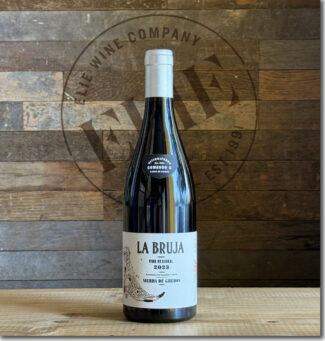 Viticultores Comando G ‘La Bruja’, 2023 Cebreros ‘Sierra de Gredos – Valle del Tiétar’ ($35) Red
Viticultores Comando G ‘La Bruja’, 2023 Cebreros ‘Sierra de Gredos – Valle del Tiétar’ ($35) Red
La Bruja—‘the witch’—was formerly a village wine from Rozas de Puerto Real, but in 2023, the fruit was sourced from Ávila. As in the previous incarnation, the 2023 was hand-harvested, allowed a natural yeast fermentation and a long maceration followed by nine months in oak vats. The wine oozes with complex flavors of blackberries, bright watermelon, red flower petals, cracked black pepper and damp earth. It is expressive and driven, almost in the style of a Morgon.
56,487 bottles produced.
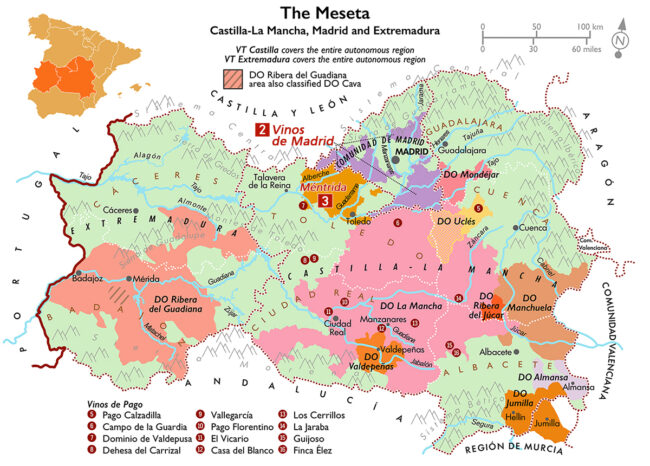
Map by Quentin Sadler, Wine Scholar Guild
2 Vinos de Madrid: At the Edge of Gredos
In the wake of the 1914 scourge of phylloxera, the vineyards that encompass what is today designated ‘Vinos de Madrid’ were a post-apocalyptic wasteland. In the Golden Age of the Spanish Empire, Vinos de Madrid encompassed more than 150,000 acres; in the rebuilding phase, which took place over the rest of the last century, about 22,000 acres were replanted with easier, higher-yielding varieties like Garnacha and Airén.
Today, the region—given official DO status in 1990—covers 55 communes and is divided into three unique subzones; Arganda, in the southwest and occupying the slopes that overlook the Jarama River, represents roughly half of the total VdM vineyards. It is planted with Tinto Fino for red and Malvar and Airén for white. Navalcarnero is a small area in the north of Arganda; it is built mainly in the highlands above the Guadarrama River. San Martín de Valdeiglesias is west of Navalcarnero; it is the smallest, the most spectacular and the most mountainous, being chillier and wetter than the other two zones.
 Viticultores Comando G ‘Rozas’, 2023 Vinos de Madrid ‘Sierra de Gredos – Valle del Tiétar’ (Rozas de Puerto Real) ($61) Red
Viticultores Comando G ‘Rozas’, 2023 Vinos de Madrid ‘Sierra de Gredos – Valle del Tiétar’ (Rozas de Puerto Real) ($61) Red
Rozas originates from six vineyard plots totaling 15 acres of old-vine Garnacha located at the foot of Cerro de los Corzos. Rozas 1er Cru is Burgundian in style (hence its ‘Premier Cru’ designation), a lithe and winsome example of mountain Garnacha with deep minerality and firm tannin. Notes of strawberry and pomegranate brighten a powdery, chalky texture.
11,298 bottles produced.
Vitícola Mentridana
Deep Roots, Light Garnacha.
Curro Barreño may have earned his reputation in Ribeira Sacra with Fedellos, where he worked with indigenous grapes like Mencía, Mouratón and Bastardo, but he’s a Méntrida man at heart. So, when Dani Landi went in search of someone to take the reins at his vineyards in the Tiétar Valley while he founded the dynamic Comando G, Barreño was the logical choice. Already used to working formidable vinescapes (Ribeira Sacra is filled with steep, nearly vertical slopes and centuries-old terraced walls), Barreño added some family property into the mix and renamed the project Vitícola Mentridana.
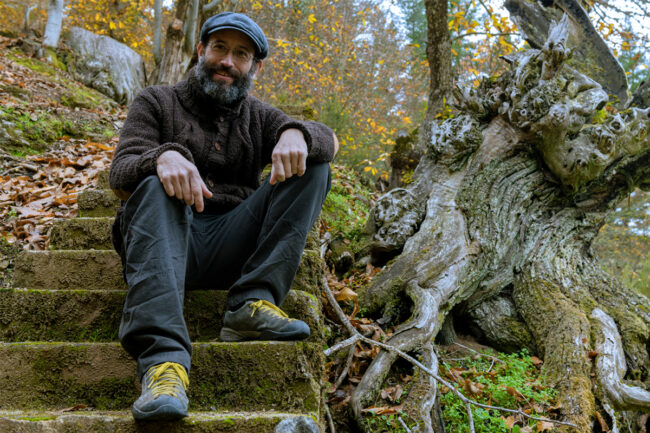
Curro Barreño, Vitícola Mentridana
“Dani and I have been friends since childhood,” Barreño says, “and over the years, we’ve shared many bottles of wine and—more importantly, we have a similar outlook on winemaking. We both saw that Garnacha had a soul that could rise above the daily, simple fruity beverage consumed by Madrileños into a product of great depth and complexity. So when I took stewardship of Dani’s Méntrida vines in 2021, it was to build on a meticulous foundation, interpreting these vineyards through what I have learned, both here and in Galicia.”
Located at the point where Alberche changes course from flowing southeast to the southwest before it eventually joins the Tagus, this is a landscape of sandy, granitic soils, meadows, and holm oaks. As a result, Vitícola Mentridana is a more Mediterranean expression of the Gredos.
“What I am after,” Barreño explains, “is a wine that can remain light on its feet, yet still show the remarkable precision and depth of which Garnacha de Gredos is capable. This is achieved through whole-cluster fermentation and a short maceration of eight days followed by foudre-aging, allowing the ripe fruit to be supported by a mineral lift and delicate tannins.”
3 Méntrida: Gredos Bones in a La Mancha Body
Skirted by the Sierra de Gredos mountains to the northeast and subdivided by three rivers (the Alberche, Guadarrama and Tagus) Méntrida nonetheless has a water problem. Summers are relentlessly dry and compromisingly hot, regularly reaching 110°F and more, and if you are not directly on a waterway, the terrain is arid. They don’t call it ‘el sartén’—the frying pan—for nothing.
Such harsh conditions are not for wimps, and indeed, the winemakers willing to brave these challenges are a special breed. Although Méntrida was awarded DO status in 1976, major progress stalled as the region continued its long tradition of producing basic table wines aimed at local consumers. Sales shrank significantly during the 1980s, and has only recently begun to spring back into the limelight as modern producers with modern techniques and quality-focused mindsets have begun to dominate the vineyards. Garnacha is the favored grape and accounting for almost 80% of total production, producing robust, tannic and age-worthy wines. It is also used for rosé wines (rosado), known for their fruity and refreshing characters. Méntrida white wines definitely play second fiddle, although quality bottling are made from Albillo, Macabeo (Viura) Sauvignon Blanc and Chardonnay. Currently, there are 13,800 acres under vine.
 Vitícola Mentridana ‘El Mentridano’, 2022 Méntrida ‘Sierra de Gredos – Valle del Alberche’ (Pueblo de Méntrida) ($21) Red
Vitícola Mentridana ‘El Mentridano’, 2022 Méntrida ‘Sierra de Gredos – Valle del Alberche’ (Pueblo de Méntrida) ($21) Red
An intense, high-altitude Garnacha, hand-harvest and whole-cluster fermented on native yeasts followed by an eight-day maceration and seven months in clusters, then aged for seven months in 30 and 37 hl French oak foudres. It shows notes of dark cherry, wild strawberry and a thyme-like herbal note on the finish. Valle del Alberche has a warmer climate than Gredos, allowing the grapes to ripen more fully; to avoid excess, the wine is given a shorter maceration period.
17,000 bottles produced.
 Vitícola Mentridana ‘Las Uvas de la Ira’, 2022 Méntrida – ‘Sierra de Gredos’ (Pueblo el Real de San Vicente, Toledo) ($34) Red
Vitícola Mentridana ‘Las Uvas de la Ira’, 2022 Méntrida – ‘Sierra de Gredos’ (Pueblo el Real de San Vicente, Toledo) ($34) Red
‘Las Uvas’ is sourced from six lieux-dits in the village of El Real de San Vicente. Totaling 17 acres of Garnacha vines over 70 years old and planted on poor granitic soils at 2800 feet in elevation, the extreme environment has a significant variation in ripening times, so Uvas de la Ira sees several different harvest and maceration times that range from 30-60 days. Otherwise, hand-harvesting is a given, as is fermentation on indigenous yeast. The somewhat light-footed wine is fragrant with strawberry and garrigue and finishes with the crash of salinity.
 Vitícola Mentridana ‘Cantos del Diablo’, 2021 Méntrida – ‘Sierra de Gredos’ (Pueblo el Real de San Vicente, Toledo) ($232) Red (1.5 Liter)
Vitícola Mentridana ‘Cantos del Diablo’, 2021 Méntrida – ‘Sierra de Gredos’ (Pueblo el Real de San Vicente, Toledo) ($232) Red (1.5 Liter)
Cantos del Diablo—the Songs of the Devil—is a tiny plot of 70-year-old vines near El Real de San Vicente in Méntrida. A combination of sparsely planted vines, exposure, climate and the age of the vines results in low yields. It’s also a cool site that ripens late and produces ethereal Garnacha typical of Garnacha’s profile when grown on sandy granite. Hand harvested, whole cluster natural yeast fermentation, pigéage and allowed a 75-day maceration. The wine is racy and taut, filled with red fruits and damp stone notes with touches of herbs and spice throughout.
A Pie de Tierra
Gredos’ New Guard, Next-Gen Garnacha
Dani Landi and Fernando Garcia’s influence in contemporary Gredos cannot be overstated, and among the generation who have learned from them, and who have now begun to put their own stamp on the granitic terroirs of the region, no one stands out like Aitor Paul and David Villamiel. Having met at enology school in 2015, the pair interned at Bodegas Valquejigoso and Comando G. With their own theoretical knowledge about vineyards and insight into the rapidly changing practice of wine growing in Spain, they began to work fifty acres owned by David’s parents—Gredos growers in the Alberche valley for many years.

Aitor Paul and David Villamiel, A Pie de Tierra
Says David, “All this Garnacha is either old, head-pruned vines or younger vines grafted onto ancient rootstock, and all was planted long before the Gredos was recognized for the quality of its Garnacha. We farm a range of Garnacha biotypes—an ancestral inheritance of the most suitable Massale-selections.”
Of technique, Aitor Paul adds, “We approach winemaking as we observed at Comando G. That means gentle macerations that are suited to the internal classification system we’ve devised: 25 days for our village-level wine, El Surco, while Fuerza Bruta sees up to 60 days on its skins before pressing. Fermentations are spontaneous and range from 70-100% whole cluster. We only employ used French oak barrels or vats made from French oak or Galician chestnut for aging.”
 A Pie de Tierra ‘Pueblo El Surco’, 2022 Méntrida ‘Sierra de Gredos – Valle del Alberche’ ($21) Red
A Pie de Tierra ‘Pueblo El Surco’, 2022 Méntrida ‘Sierra de Gredos – Valle del Alberche’ ($21) Red
Thanks to a trademark issue, the village level ‘A Dos Manos’ is called ‘El Surco’ (The Groove—a reference to both the furrows left by a plow and the new-wave style) in the United States. Built from 40-year-old Garnacha vines grown at elevations in excess of 2000 feet, the grapes are hand-harvested, 70% whole-cluster fermented on natural yeast and given a 25-day maceration regimen before spending a year in seasoned French oak. The wine shows delicate aromas of summer strawberries, bramble, rose petals and soft spices.
 A Pie de Tierra ‘Paraje Fuerza Bruta’, 2022 Vinos de Madrid ‘Sierra de Gredos – Valle del Alberche’ (Dehesa de Navayuncosa) ($29) Red
A Pie de Tierra ‘Paraje Fuerza Bruta’, 2022 Vinos de Madrid ‘Sierra de Gredos – Valle del Alberche’ (Dehesa de Navayuncosa) ($29) Red
A portrait of authenticity and a paean to the rugged landscape from which it emerges, Fuerza Bruta—’Brute Force’—hails from Aldea del Fresno vineyards. Crafted from 60-year-old Garnacha vines grown organically in granite alluviums, it is 100% whole-cluster fermented on indigenous yeasts, and sees 45 days of maceration before spending a year in large chestnut barrels and French oak foudres. The wine undergoes malolactic fermentation without clarifying or filtering. The wine is light, elegant and almost Rhône-like; it shows pretty highlights of spring berries, anise and watermelon candy.
Northwest, Along the Duero River
Toro & Arribes
From Gredos, we move a few dozen miles up the Duero River, heading northwest to Toro, where we find a similar dedication to upgrading the reputation of the native grapes. In this case, Alvar de Dios—also a student of Dani Landi and Fernando Garcia—has approached Tempranillo with the same reverence as Dani and Fernando did with Garnacha, and unearthed a similar finesse. He also works with a number of varieties unique to Toro, some of which have yet to be identified.
This selection of wines is a fine representation not only of the direction that Toro is taking, but of the personalities of the winemakers who are taking it there.

Alvar de Dios
Elevating Forgotten Vines at Spain’s Western Edge
It’s a tangled path to glory, and Alvar de Dios has paved it with dedication. Having been born to a vineyard-tending family in El Pego, near the southern boundary of DO Toro, he opted to learn winemaking outside of his native village, finding inspiration in the rebel yell of Dani Landi and Fernando Garcia. While working as cellar master for Fernando at Bodega Marañones, he began acquiring vineyards of his own in his old neighborhood, finding it possible to split his time the Gredos and Toro.
His first chunk of property was inherited; ‘Aciano,’ named for grandfather, totals eight acres of extremely old Tempranillo at an elevation over 2000 feet. Planted in sandy soils in 1919, these vines proved resistant to the phylloxera scourge of the 1920s. He began to tend the vines organically, and although he was gifted the vineyard in 2008, he waited until the vines had suitable time to respond to his care, waiting until 2011 to make his first vintage.
Having purchased an additional acre-sized plot of abandoned vines called Vagüera just south of the legal border of Toro. He was awed by the elevation (3100 feet), but more so by the terroir.

Alvar de Dios
He says, “Vagüera is fascinating terroir, unique to the area, shallow rocky red clay soil over limestone, north-facing, and sheltered by a cork oak forest. It hasn’t been tended since 2006 and has a bewildering mix of white varieties. So far I have identified Doña Blanca, Albillo Rojo, Albillo Real, Albillo Negro, Albillo Castellano, Moscatel de Grano Menudo, Muscat de Alexandria, Moscatel Rojo, Godello, Verdejo, Palomino Fino, and Malvasia! There are at least another more that I cannot yet name. Records indicate that this vineyard was planted in 1921.”
Alvar next set his sights on Arribes, a new DO that only gained status in 2007. The valley is the point where the Duero River becomes the Douro as it leaves the steep granitic mountains that form the border between Spain and Portugal and where the soils reminded him of Gredos. Rather than Garnacha, however, he found a range of indigenous varieties capable of expressing the elegance and freshness that he so loved in Gredos.
In Arribes, he has assembled twelve acres from 36 separate vineyard parcels between the towns of Villadepera and Fermoselle (a.k.a. Zamora). He says, “Camino de los Arrieros is my village wine, made from 40-60-year-old vines of Juan Garcia, Rufete Trincadeira Preta, Bastardo, as well as some other unidentified varieties. I’ve also managed to identify two tiny, enclosed vineyards near Villadepera—Las Vidres planted with Doña Blanca and Yavallo planted with Merenzao Rufete, Trincadeira Preta, Méncia, and Doña Blanca. Both vineyards are 80-90 years old. Las Vidres shows a profoundly mineral core with evocative aromas of wild herbs and pollen, while Yavallo is fresh and floral with a depth of flavor and precision that seem to be like a cross between the Jura and a top Douro red.”
1 Toro: Muscular Red, Refined on Castilla’s High Plateau
Even the name suggests untamed intensity and brute strength. In fact, throughout most of its history, the region was a Spanish backwater producing harsh, strong reds intended largely for local consumption. Aggressive alcohol and muscular tannins ensured that the region was hard-pressed to build an audience outside its borders.
But like many similar, rustic areas in Spain, formerly written-off by high-brow consumers, a new generation is re-evaluating varieties and terroirs throughout Toro, and finding a ripe ground for investment and better viticultural management. The wines are primarily red and made from Tempranillo (here called Tinta da Toro) with a longer vegetative cycle that helps it cope with the heat. Altitude also plays an important role in Toro’s terroir. Situated on the vast, high plateau that separates the Cordillera Cantábrica and Sistema Central mountain ranges, most vineyards sit at altitudes between 2000 and 2800 feet.
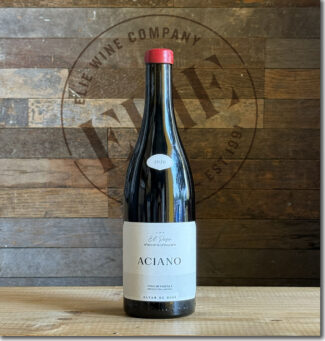 Alvar de Dios ‘Parcela Aciano’, 2020 Castilla-y-León ‘Toro’ (Village El Pego) ($33) Red
Alvar de Dios ‘Parcela Aciano’, 2020 Castilla-y-León ‘Toro’ (Village El Pego) ($33) Red
Aciano comes from a ten-acre, pre-phylloxera vineyard once owned by Alvar’s grandfather. It is predominantly planted with ungrafted Tinta de Toro more than a century old. Winemaking is traditional, fermenting on native yeasts aging in used oak barrels. The wine brims with wild bramble-berries, hints of violet perfume and garrigue, finishing with sandy tannins enveloped in minerality and nuances of aromatic herbs.
 Alvar de Dios ‘Parcela Vagüera’, 2021 Castilla-y-León ‘Toro’ (Village El Maderal) ($42) White
Alvar de Dios ‘Parcela Vagüera’, 2021 Castilla-y-León ‘Toro’ (Village El Maderal) ($42) White
Within the three-acre Vagüera vineyard there are only 300 vines, yet they represent 15 different varieties of white grapes including Verdejo, Godello and Albillo. Doña Blanca comes from a single plot in El Maderal, which is the highest municipality in the Guareña region—an elevation of over 2000 feet gives the area a distinct Atlantic character. The soil here is clay, not sand, which helps retain moisture when it rains. These vines were planted in 1920; they are harvested by hand, give a short cold maceration of under a day followed by a gentle pressing. Fermentation takes place in used 300-liter barrels on native yeasts. It rests for a year before bottling without filtering or clarifying. The wine sports a well-defined bouquet of citrus and apricot and a creamy palate with a soft effervescence and a touch of minerality on the finish.
2 Arribes: Castilla’s Wild West
The Duero runs through many landscapes, but few are as dramatic and scenic as those on the border near Portugal—the steep gorges known locally as ‘arribes,’ which lend their name to one of the smallest and most remote DOs in Spain. Wine has traditionally been the area’s most well-known product, but in recent years—as in many outlying Spanish wine zones—the loss of vineyards has been staggering. In the 1970s, Spain’s Ministry of Agriculture estimated that 7000 acres in Fermoselle were under vine and another 12,000 acres in the Salamanca region of Ribera. Today, there are fewer than 700 vineyard acres registered in the whole appellation.
Terroir is the defining feature that set Arribes apart from the eastern side of the Duero valley. As it enters the gorges, the river is embedded in a Paleozoic basement composed of granite rocks and, to a lesser extent, slate. In general, granite is more prevalent in Zamora (it is not uncommon to find large rocks and boulders, like those of Gredos), while slate is mostly seen in Salamanca.
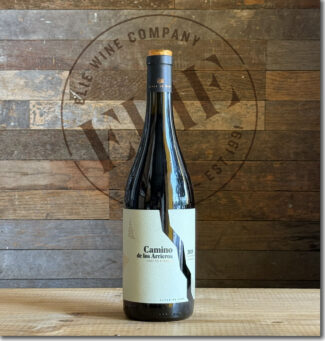 Alvar de Dios ‘Camino de los Arrieros’, 2020 Castilla-y-León ‘Arribes’ (Village Villadepera) ($24) Red
Alvar de Dios ‘Camino de los Arrieros’, 2020 Castilla-y-León ‘Arribes’ (Village Villadepera) ($24) Red
A field blend of Rufete, Juan García, Trincadeira Preta, Merenzao, Mandón (and other nameless varieties) whose vine-ages range between 40 and one hundred years and planted on sandy red slate soils. The wine is fermented whole-cluster by indigenous yeasts in 1000 liter French oak vats with old-school pigéage… by foot. The wine is complex and evolving, revealing aromas of black cherry, fig, and cedar and a pronounced mineral backbone.
 Alvar de Dios ‘Parcela Yavallo’, 2020 Castilla-y-León ‘Arribes’ (Village Villadepera) ($69) Red
Alvar de Dios ‘Parcela Yavallo’, 2020 Castilla-y-León ‘Arribes’ (Village Villadepera) ($69) Red
Although smaller than half an acre, the Yavallo parcel features a staggering array of grape varieties, each of which find a home in this blend. 60% Merenzao, Yavallo also contains Rufete, Juan García, Trincadeira Preta, Mencía, Cariñena and about 5% Doña Blanca; all are old vines grown on sandy red schist soils. Harvested by hand in a single day, Yavallo is fermented whole-cluster on indigenous yeasts after a five day cold maceration. Fermentation and subsequent maceration last 40 days followed by aging for 12 months in a single 300L French oak barrel. The nose is a lure of wild strawberries and pomegranate accented by white pepper, sesame and wet gravel on the finish.
 Alvar de Dios ‘Parcela Las Vidres’, 2020 Castilla-y-León ‘Arribes’ (Village Villadepera) ($69) White
Alvar de Dios ‘Parcela Las Vidres’, 2020 Castilla-y-León ‘Arribes’ (Village Villadepera) ($69) White
Las Vidres is an enclosed, acre-sized vineyard in Villadepera just a few miles from the border of Portugal and is planted to 80-90-year-old Doña Blanca. It enjoys gentle, southeasterly exposure and sandy, volcanic soils that produces scarcely more than a couple barrels of wine per year. In a style reminiscent of an age-worthy Pouilly Fumé, Las Vidres shows damp stone and fig on the nose with gunflint, white pepper and a saline finish.

Bodega Almaroja
Pioneering Biodynamic Reds in Rugged Borderlands
‘Almaroja’ means ‘red soul’ and winemaker Charlotte Allen, a British ex-pat living in Spain, says, “Red symbolizes vitality, courage, optimism, nonconformity and passion.”
All of these attributes are integral to the soul of this iconoclastic woman and her deep love for the rugged terroirs of Zamora. She operates (for the most part) alone, adhering to the best of biodynamic practices, working on weaker parcels on specific dates and times, treating her vineyard for pest with botanical blends, including sage and nettle. She hand-harvests a scant half-ton per acre and grows a number of spectacular grapes little known outside her region.
Long a friend of Elie’s, Charlotte wrote us in 2019 and offered us some background notes:
“When I moved to Spain in 2007 and started making my own wine, I had a very clear vision of what I wanted to do, which was to make just one barrel-aged red wine. This first wine was named Pirita Crianza. For a couple of years that was enough, but slowly I felt the need to challenge my skills, so along came a white, also under the Pirita label, and then a top cuvée, Charlotte Allen. For a few years I was happy with just these three wines, but by the time 2015 came along, the old wanderlust was back.
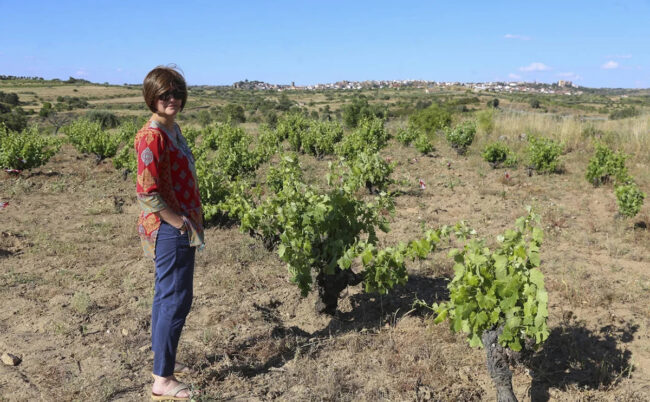
Charlotte Allen, Bodega Almaroja
“Cielos y Besos was born on a long car journey to the mountains. With my son sleeping in the back seat, I started to think about a particular tank of wine I had which was bright, fresh and fruity and just said ‘Drink me.’ I had never before thought of making a ‘joven’—that is to say a red wine with no barrel aging, but as the miles sped by and the mountains approached, it seemed like an increasingly good idea. So good in fact, that by the time we arrived at the ski station, the decision had been made.
“The name was inspired by one of my favorite songs, ‘Tiempo y Silencio’ by the Cape Verde singer Cesária Évora. I had always thought that the title of song (Time and Silence) would be a wonderful name for a wine. There is however a much bigger bodega in Extremadura which makes a wine called “Habla del Silencio” and I knew that a court case would probably leave me with nothing more than lawyer’s fees and egg on my face, so gave up on the idea. But the song just kept going around in my head. “Tiempo y silence, gritos y cantos, cielos y besos, voz y quebranto…” The name seemed somehow joyful to me, much like the feeling the wine inspired.
“It is a blend made up predominantly of organically-farmed old vine Juan García, a variety native to the Arribes del Duero and the most widely planted red grape in the area. The wines of this variety are characterized by wild berry fruit, fine tannins and good acidity. The remainder is an eclectic mix of Tempranillo, Rufete, Bastardillo Chico, Bastardillo Serrano and Garnacha, with a few kilos of white grapes thrown in for good measure.
The grapes were fermented in concrete tanks at a relatively low temperature of 77 degrees Fahrenheit. The wine spent around three weeks on the skins, with a daily pumping over. It was older in these same tanks for around eight months and was bottled without fining or filtration and with no added sulfur. I recommend drinking it very slightly chilled.”
 Bodega Almaroja ‘Cielos y Besos’, 2022 Arribes ($22) Red
Bodega Almaroja ‘Cielos y Besos’, 2022 Arribes ($22) Red
A blend of Juan García, indigenous to Arribes del Duero, Bruñal (another variety indigenous grape) and Rufete, is a native of Portugal. The wine spends four days in a pre-fermentation maceration, followed by a fermentation on the skins for almost three weeks in temperature controlled concrete tanks, and with a pump-over once every two days. The wine then spends eight months on its fine lees in concrete tanks, and undergoes full malolactic fermentation before being bottled without fining, filtration or stabilization. The wine is intense with dark plum and smoke notes.
 2019 Bodega Almaroja ‘Pirita’, 2019 Arribes ($33) Red
2019 Bodega Almaroja ‘Pirita’, 2019 Arribes ($33) Red
Another explosive showcase for the local varieties Juan Garcia, Rufete and Bruñal, the Pirata name references pyrite, the ‘fool’s gold’ of the mineral world. Like Cielos y Besos’, the grapes for Pirita undergo a pre-fermentation maceration in a blend of temperature controlled stainless steel and concrete tanks, followed by a fermentation of four weeks with daily pumping over. Pirita then spends a year in 300-liter French oak barrels, where it undergoes malolactic fermentation before being bottled without filtration or stabilization, but some clarification. It shows notes of roasted plum, cranberry, earthy blueberry and a solid acidic core.
- - -
Posted on 2025.07.29 in La Tierra de Castilla, Spain DO, Wine-Aid Packages, Arribes
Featured Wines
- Notebook: A’Boudt Town
- Saturday Sips Wines
- Saturday Sips Review Club
- The Champagne Society
- Wine-Aid Packages
Wine Regions
Grape Varieties
Aglianico, Albarino, Albarín Blanco, Albarín Tinto, Albillo, Aleatico, Arbanne, Arcos, Aubun, Barbarossa, barbera, Beaune, Biancu Gentile, bourboulenc, Cabernet Franc, Cabernet Sauvignon, Caino, Caladoc, Calvi, Carcajolu-Neru, Carignan, Chablis, Chardonnay, Chasselas, Clairette, Corvina, Cot, Counoise, Erbamat, Ferrol, Fiano, Frappato, Friulano, Fromenteau, Fumin, Garnacha, Gewurztraminer, Godello, Graciano, Grenache, Grolleau, Groppello, Juan Garcia, Lambrusco, Loureira, Macabeo, Macabou, Malvasia, Malvasia Nera, Marsanne, Marselan, Marzemino, Melon de Bourgogne, Merlot, Mondeuse, Montanaccia, Morescola, Morescono, Moscatell, Muscat, Natural, Nero d'Avola, Palomino, Parellada, Patrimonio, Petit Meslier, Petit Verdot, Pineau d'Aunis, Pinot Auxerrois, Pinot Blanc, Pinot Gris, Pinot Meunier, Pinot Noir, Poulsard, Prieto Picudo, Rondinella, Rose, Rousanne, Roussanne, Sauvignon Blanc, Savignin, Semillon, Souson, Sparkling, Sumoll, Sylvaner, Syrah, Tannat, Tempranillo, Trebbiano, Trebbiano Valtenesi, Treixadura, Trousseau, Ugni Blanc, vaccarèse, Verdicchio, Vermentino, Viognier, Viura, Xarel-loWines & Events by Date
- September 2025
- August 2025
- July 2025
- June 2025
- May 2025
- April 2025
- March 2025
- February 2025
- January 2025
- December 2024
- November 2024
- October 2024
- September 2024
- August 2024
- July 2024
- June 2024
- May 2024
- April 2024
- March 2024
- February 2024
- January 2024
- December 2023
- November 2023
- October 2023
- September 2023
- August 2023
- July 2023
- June 2023
- May 2023
- April 2023
- March 2023
- February 2023
- January 2023
- December 2022
- November 2022
- October 2022
- September 2022
- August 2022
- July 2022
- June 2022
- May 2022
- April 2022
- March 2022
- February 2022
- January 2022
- December 2021
- November 2021
- October 2021
- September 2021
- August 2021
- July 2021
- June 2021
- May 2021
- April 2021
- March 2021
- February 2021
- January 2021
- December 2020
- November 2020
- October 2020
- September 2020
- August 2020
- July 2020
- June 2020
- May 2020
- April 2020
- March 2020
- February 2020
- January 2020
- December 2019
- November 2019
- October 2019
- September 2019
- August 2019
- July 2019
- June 2019
- May 2019
- April 2019
- March 2019
- February 2019
- January 2019
- December 2018
- November 2018
- October 2018
- September 2018
- August 2018
- July 2018
- June 2018
- May 2018
- April 2018
- March 2018
- February 2018
- January 2018
- December 2017
- November 2017
- October 2017
- September 2017
- August 2017
- July 2017
- June 2017
- May 2017
- April 2017
- March 2017
- February 2017
- January 2017
- December 2016
- November 2016
- October 2016
- September 2016
- August 2016
- July 2016
- June 2016
- May 2016
- April 2016
- March 2016
- February 2016
- January 2016
- December 2015
- November 2015
- October 2015
- September 2015
- August 2015
- July 2015
- June 2015
- May 2015
- April 2015
- March 2015
- February 2015
- January 2015
- December 2014
- November 2014
- October 2014
- September 2014
- August 2014
- July 2014
- June 2014
- April 2014
- March 2014
- February 2014
- January 2014
- December 2013
- November 2013
- October 2013
- September 2013
- August 2013
- July 2013
- June 2013
- May 2013
- April 2013
- March 2013
- February 2013
- January 2013
- December 2012
- November 2012
- October 2012
Search



